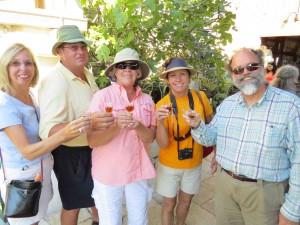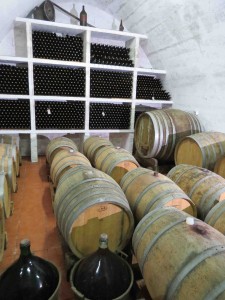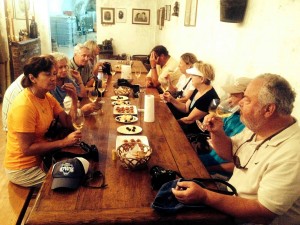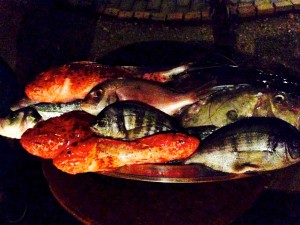Today we arrived in Vis, another small island that has only been recently modernized because for several years before Croatia’s independence in 1991, Vis housed a secret Yugoslav base and travel was severely restricted there. Having said that, as in many other islands in the Adriatic, Vis has been populated since Neolithic times. It too went through the litany of owners/conquerors but, differently than the others, Vis played a significant role in World War II. The British used this island as an air base and hospital and Vis provided a safe haven for a number of crippled aircraft and airmen during the war. Even George McGovern made an emergency landing here in his B-24. Vis also served as the headquarters for Marshal Tito, the leader of the Yugoslav partisan resistance movement. It was Tito, together with the British who liberated Vis from the Italians. There also was a significant submarine pen here that we did not see.
The traditional commerce of the island was fishing and agriculture – especially wine production. At one point, over 2300 hectares was devoted to vineyards. In fact, you see where hillsides were terraced for the creation of vineyards. Today, there is only about 10% of that in actual production. When we asked the locals, we got lots of answers, but the one that I liked the most was tied to the end of Communist rule. Apparently, Vis was responsible for churning out lots of cheap white wine to quench the thirst of the Communists in Yugoslavia and beyond. Once independence was declared, the decision was to decrease production and increase quality. Most of that production goes through Vis Town and, by personal experience, I can tell you that the wines were excellent! They still produce mostly white wines (Plavic Mali and Vugava [in essence, Viogner]), but they also produce Kurteloska (cousin to Zinfandel). Vis Town is also where most of the tourism is centered. The only other town of any size is on the other side of the island – Komiza. Here, most of their economy is from fishing and lobstering. The lobsters actually come from a nearby volcanic island that is almost totally black. To hide themselves, the lobsters have evolved to having a dark brown shell. Hence they call them “chocolate lobsters.” The other specialty in the area is something called carob brandy. One of the few agricultural pursuits on this side of the island is growing carob. When fermented with the makings for their local grappa, out comes carob brandy. We all tried some and it was pretty potent!
We ended up buying some locally produced cheeses and charcuterie and it was excellent. We also went to a great restaurant for dinner where all the fish were presented on a platter. Yum!
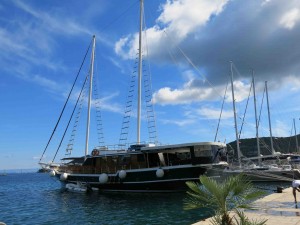
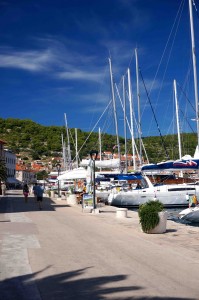
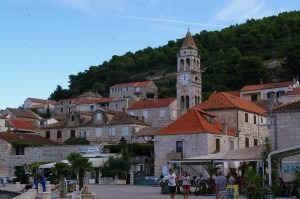
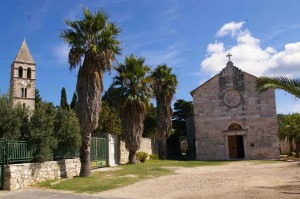
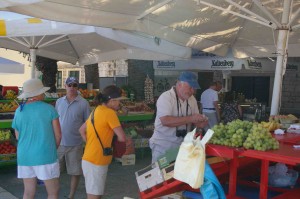
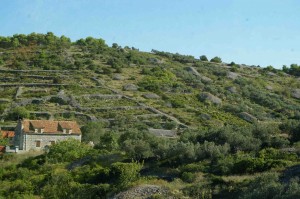
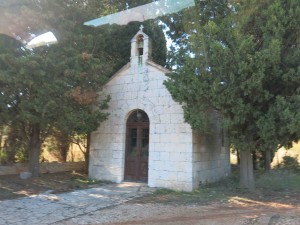
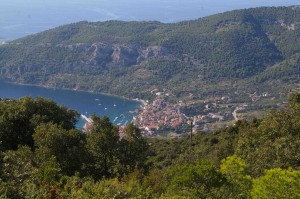

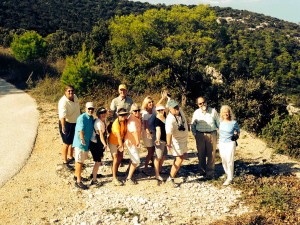
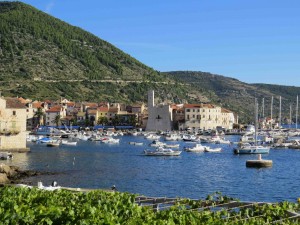
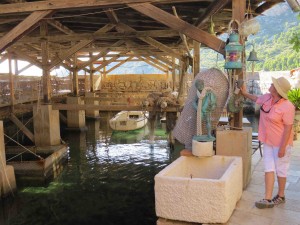
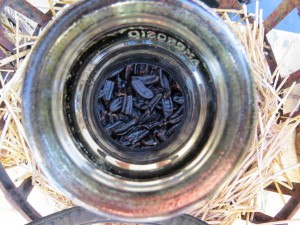
… where they still ferment the carob beans with the grape stems to make carob brandy (think chocolate grappa).
